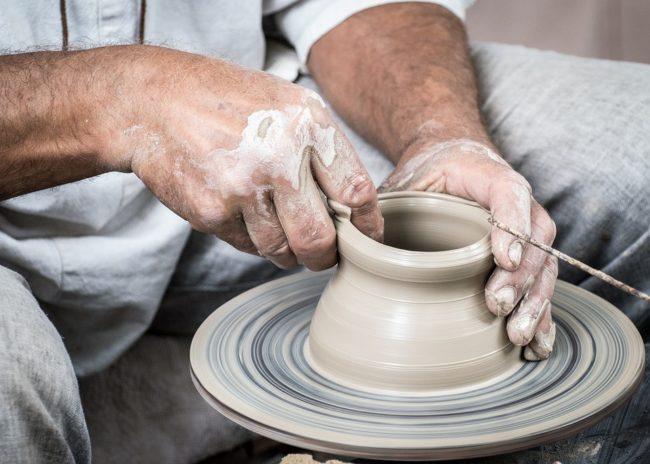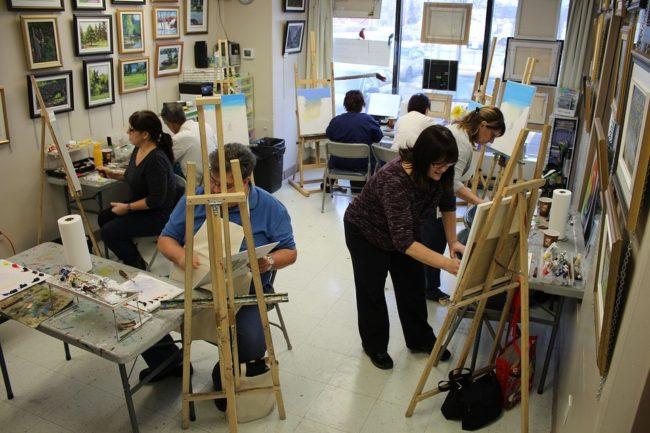Has the popularity of online DIY videos prevented you from starting your own arts and crafts workshop? Don’t be intimidated anymore.
The availability of digital DIY videos hasn’t rendered the traditional workshops obsolete. Workshops are still very popular among people who want to learn a skill, especially in the arts and crafts field. In fact, the arts and crafts videos are attracting more people towards workshops.
What makes so many people opt for the old-school workshop approach?
- Workshops are interactive and hands-on. The learners can ask questions, then try doing what the trainer has said to see if it works. If they fail, the instructor can help them do it correctly.
- People are learning skills as a way to escape the digital world or to generally improve their quality of life. Many see workshops as a growth experience.
Workshops are usually limited to just a few short sessions. This puts pressure on you, the trainer, to condense your course work without compromising the quality. You must therefore plan well and ensure everything is in order beforehand.
How do you do it? Follow these steps…
Billetto is a ticketing platform that helps you manage, promote, and host events. Set up an event page and start selling tickets in 5 minutes.
CREATE YOUR EVENT >>
1. Make sure you are adequately proficient

For you to host a workshop and successfully teach people any skill, you need to be really good at it. Remember, you will be demonstrating as you teach. If you struggle with some of the crucial techniques, work on perfecting them before you start hosting workshops.
Alternatively, you can hire a qualified trainer and play the organising role only.
You then need to research about the craft you are going to teach. For example, note if there are other innovative ways to do it beyond the one you are used to.
Some suggestions may be too impractical. You can usually spot those immediately based on your experience. Try those that appear plausible. If they work, you can add them to your teaching material.
Join artists’ forums or enrol for online learning programmes to keep yourself updated about new innovations and techniques in your field.
Other than your skill in your craft, train yourself on how to run craft workshops. Learn the most effective ways to deliver the content, the challenges you may face, and how to overcome them.
2. Study your audience
Lessons are always better when the teacher knows his students well. This also applies to workshops.
Admittedly, as you market your workshop and sell tickets, you can’t be sure of the exact kind of people that will attend.
However, you can make educated guesses about the likely participants.
For instance, you can do online research about what attracts people in your target area into arts and crafts. This could be as simple as typing “Why do people sign up for [my type of] class?” into Google to see if you can learn more about their motivations and gauge what your audience wants.
If you have had a previous workshop, think of the type of people who attended. Were they new to the world of artistry or were they looking to improve the skills they already had?
If it’s your first time, you can connect with artists in your area and consult with them about the local audience.

Your workshop may also be designed for certain demographics, like children. Set an age range for such children workshops and prepare your teaching material to suit that age.
3. Prepare instructional and learning materials
Depending on the field you are going to teach about, you may need to distribute handouts with instructional notes and pictures to the participants.
Decide whether you will be providing the learning materials or if the audience will bring theirs. Alternatively, you can provide some and have the audience bring others.

Here’s an example: If you are teaching painting, you can provide brushes since they are reusable. Learners can then come with their own paint and canvases.
Alternatively, you can pre-purchase all the items in advance. Luckily, plenty of online shops sell arts and crafts supplies.
Your participants can then pay for these either separately or as part of the attendance fee. Speaking of which…
4. Set an attendance fee
When setting attendance fees, you must first make sure that the amount you collect can at least cover your operational costs. (That is, if you’re not trying to make a profit.) This can be quite a challenge if the costs are high. Note that workshop attendance is typically low: maximum about 20 people.
In such instances, dividing the costs by the number of students can result in surprisingly high charges. Avoid getting yourself in such a situation by keeping your costs as low as possible.
You can also study what similar workshops tend to charge their participants. Consult with local artists directly—if you know some—or through forums.

Decide how the amount is going to be collected. Will the attendants pay in advance, when they arrive, or will you collect the fees in cash upon concluding the workshop?
If you intend to sell tickets, doing so in person presents new challenges such as accountability and delivery. You can avoid this by selling them in advance through a reliable online ticketing site.
5. Create a lesson plan
Although workshops are informal, you need some order in how you are going to teach. Art workshop lesson plans differ from others because they entail a lot of practical work.
Break the lesson into sessions of actionable activities, and mix theory with practice. Allocate enough time for each session, especially the practical parts. The learners will likely make mistakes and may need to try more than once. You will also need time to go through what they have done.
Leave time for enough breaks. You can fix them at the end of sessions where equipment needs to be cleaned.
Need some resources? Check these out:
- Here’s a guide on making a lesson plan.
- Here are some useful templates you can use to design and print a lesson plan.
6. Setting up the space
Workshops to teach crafts can be taught almost anywhere. You can convert a local classroom, an office, conduct it outdoors, or even rent a hall. The choice of venue is therefore not such a big issue.
Setting up the sitting arrangement, however, is a crucial part of the planning. Workshops are meant to be interactive, so consider this when setting up the space.

Make sure attendants can interact with each other, and leave enough space for the learning materials.
Tip: To find venues that cater specifically to creative workshops, check out this portal.
Billetto is a ticketing platform that helps you manage, promote, and host events. Set up an event page and start selling tickets in 5 minutes.
CREATE YOUR EVENT >>
Start planning your workshop
If done well, teaching a workshop can be a fulfilling experience for you and the learners. If you want to earn money, you can go into teaching workshops as a side job and gradually develop it to be your main business.
This can only happen, however, if your training leaves the learners contented. This begins with your preparation.
Good planning leads to meaningful and informative workshops. You should therefore pay attention to the tiniest details during this planning process. Good luck!





Leave a Reply